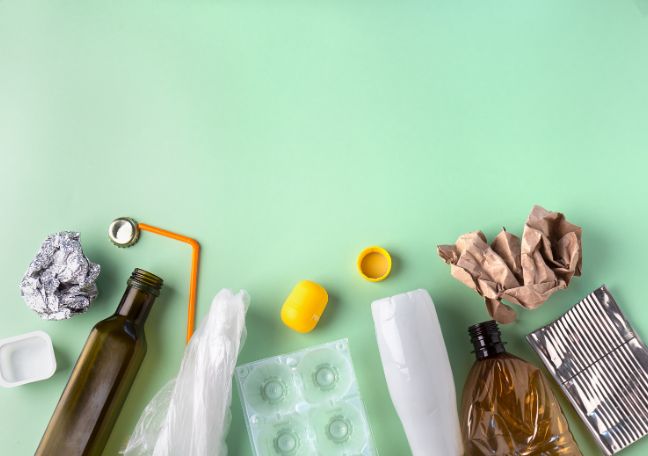Lesson summary
Students will identify and try to solve a waste problem in their classroom. They will identify waste problems and solutions using a T-chart before summarising these in writing. Students will work collaboratively to develop ideas for creating less waste and will record these in a new T-chart.
Learning intentions:
Students will...
- identify waste management issues
- use summarising skills to sort key information.
Success criteria:
Students can...
- summarise problems and solutions to waste management issues
- collaborate to develop a plan to reduce the amount of solid waste created in the classroom.
Lesson guides and printables
Curriculum links
Select your curriculum from the options below.
Lesson details
Skills
This lesson is designed to build students’ competencies in the following skills:
- critical thinking
- collaboration
- communication
Curriculum Mapping
Australian Curriculum (v9.0) content description:
Year 3 English
Students learn to:
- use comprehension strategies when listening and viewing to build literal and inferred meaning and begin to evaluate texts by drawing on a growing knowledge of context, text structures and language features (AC9E3LY05).
Year 4 English
Students learn to:
- use comprehension strategies such as visualising, predicting, connecting, summarising, monitoring and questioning to build literal and inferred meaning, to expand topic knowledge and ideas, and evaluate texts (AC9E4LY05).
Relevant parts of Year 3 English achievement standards: Students read, view and comprehend texts, recognising their purpose and audience.
Relevant parts of Year 4 English achievement standards: Students read, view and comprehend texts created to inform, influence and/or engage audiences.
NSW Syllabus outcomes:
A student
- reads and comprehends texts for wide purposes using knowledge of text structures and language, and by monitoring comprehension (EN2-RECOM-01)
General capabilities: Critical and Creative Thinking, Literacy, Personal and Social Capability
Cross-curriculum priority: Sustainability
Level of teacher scaffolding: Medium - model the creation of a T-Chart with students and support them in creating their own, lead students in discussion and oversee class discussions and group tasks.
UN Sustainable Development Goals
UN SDG 12: Ensure sustainable consumption and production patterns
- Target 12.5: By 2030, substantially reduce waste generation through prevention, reduction, recycling and reuse
Resources Required
- Writing materials
- Whiteboard
Additional Info
This unit of lessons is designed for students to build their literacy comprehension skills while exploring the real-world issue of waste. Cool.org thanks our philanthropic funder, Eldon and Anne Foote Trust, through the Lord Mayor’s Charitable Foundation, for their generous contributions in creating these resources.
Related Professional Learning
How To Teach Sustainability With Hope
Quick summary: This course will help you teach topics that relate to climate change and the cross-curriculum priority of sustainability.


Welcome back!
Don't have an account yet?
Log in with:
Create your free Cool.org account.
Many of our resources are free, with an option to upgrade to Cool+ for premium content.
Already have an account?
Sign up with:
By signing up you accept Cool.org's Terms and Conditions(Opens in new tab) and Privacy Policy(Opens in new tab).